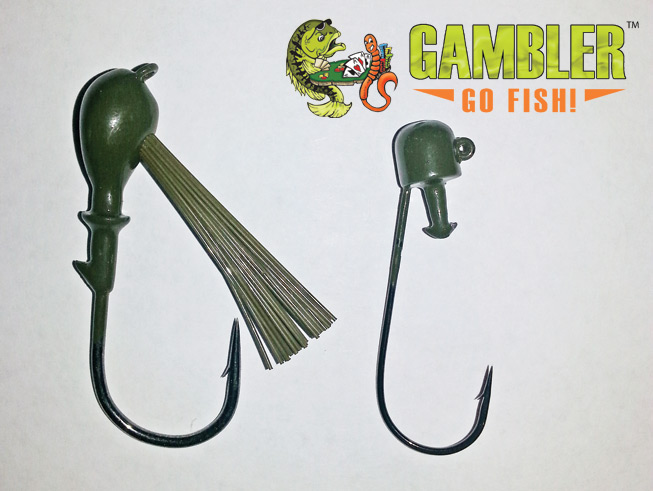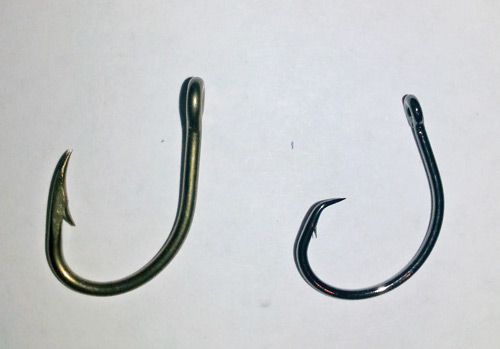
The word “penetrate” means to pierce or pass into or through. Why should this simple concept be of such importance to anglers? Because even fishing is affected by science. In this case I want to explain the science behind landing fish by ensuring the hooks you choose “penetrate” the fish’s mouth effectively.

Choosing the right hook size is extremely important when rigging up for any particular species in your quest. Your hook selection must be appropriate to match the species characteristics. You don’t fish for triggerfish with an 11/0 circle hook–it’s perfect for hauling big grouper, but way too big for the trigger’s tiny mouth! This example may seem obvious, but something often overlooked in this selection process is the thickness of a hook. That same tiny-mouthed trigger that requires a small hook also requires a heavy gauge hook because they can easily mangle one made out of a light wire.
When angling for reds and trout in our bays, I find that long casts are often required to get spooky fish to take a lure. With this in mind, I like to use the lightest wire hooks I can get away with. Sure they must be strong enough to land the fish, but proper action rods and a smooth drag are equally important. Light wire hooks penetrate a fish’s mouth easier than a heavy wire hook so when I swing on a fish that hits my lure way out on the end of a long cast, I get maximum penetration with minimal effort. Think about pushing a nail or a needle through flesh; which one goes in easier?…obviously the needle.
I spend a lot of time fishing for bass in the thickest, nastiest grass and wood cover I can find. In this scenario, I often swing on a fish (hopefully a big one) that’s only a few feet from my boat. Considering I’m using 65 lb. test braided line and a long, heavy-action rod, my hook must be rated accordingly. Heavy gauge steel, or super-line hooks are the preferred choice here. Other times, I’m using light lines and small lures to get finicky bass to bite. In this case, a light wire hook is a better choice because I get better action out of my lures. I can use lighter lines and I can get better hook penetration when I swing on the end of a long cast.
I recently found myself hovering over a nearshore reef and amberjack were schooled up and slamming top-water plugs! Due to the close proximity of the shallow reef below, we had to use stout rods and tight drags to have a chance at landing them. One of the plugs I tried got an immediate bite, but the fight was short-lived. In seconds, the fish straightened out the hooks on that plug and went on his way. Other similar plugs I used (that were much cheaper, I might add) had stouter hooks and kept these bruisers buttoned up and to the boat.
Look carefully at the hooks you use and consider the species and their characteristics. Think about the surroundings where you’re fishing: are there reefs or wood cover for fish to run to, or just open water? Factor in casting distances, rod lengths and actions and line size. There’s a science behind proper hook selection but it’s not complicated. It just requires an understanding of all the elements to ensure your hook “PENETRATES” the fish, and gets it to the boat.
~ CAPT. RANDY CNOTA
